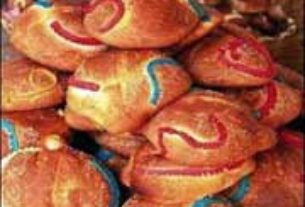Dateline – La Ceiba, Puebla, Mexico
May 1, 1998
“La Ceiba” (or maybe Lázaro Cárdenas or Tito Hernández or Villa Avila)
La Ceiba is a small town in the state of Puebla on the highway between Mexico City and Poza Rica, Veracruz. It’s about 45 minutes from Poza Rica. The town was named after a large ceiba tree that once grew in the plaza. The name of the town has actually been changed to that of some historical figure, a fact which I choose to ignore, as do most of the people who live there. (Unless you specifically don’t want to, I suggest including the town’s changed name. It will save a lot of email later.)
La Ceiba is located in a valley where two rivers join, forming one, and then meanders on to Poza Rica and the Gulf. Crossing a bridge at the edge of town you will often see women washing clothes on large stones and socializing. The river-bed is wide and accessible, making it a good place to wash a car or truck. On hot summer weekends it is a favorite place for children, and adults, to play in the water and cool off. The river water flows from the mountains and is generally very clean.
The town’s economy is not that great. About the only thing it has going for it is that coffee buyers from various parts of the world come there in the Fall to buy coffee. Coffee is one of the principle crops grown in the area. Because of the tropical climate and the abundance of fruit and other edible vegetation that grows wild, there isn’t much excuse for starving. A friend in a nearby town once commented that he thought perhaps that one reason the people were not more industrious was that it was too easy to survive without working hard. One might look at the unemployment figures for Mexico and weep. However, if one is surviving in Mexico he must be doing something. There aren’t too many handouts.
When I used to take monthly trips to the U.S.A., I used to stop at La Ceiba on the way up, and then again on the way home. Driving north from Tlaxco you pass through pine-covered mountains and then the road levels out a little. You are likely to pass farmers plowing their fields with horses and a hand held plow. Small children and women sit motionless as they tend their grazing sheep.
An hour or so north of Tlaxco there is a two-lane highway that carries a lot of truck traffic between Mexico City and the Gulf. Here we turn east and begin our descent which continues until we reach the state of Veracruz. Pine forests are gradually replaced by semi-tropical and then tropical vegetation. Within twenty minutes we are by-passing Huachinango and soon we see the lovely, small lake Necaxa, on our right. Often small boats are visible on its still surface. On the other side of the lake is Tenango de Las Flores, a small town dedicated to the growing of flowers and other plants. It is one of my wife’s favorite places. She loves plants. Beyond the lake and its dam is the beginning of a deep, scenic valley with a river running its course far down below us. It is most enchanting at times with whiffs of white clouds resting on the steep mountain-sides. It reminds me of a copy I have of an ancient Chinese painting.
In another fifteen minutes we are at Xicotepec, a major coffee-processing center. At the right time of year, when they are roasting coffee beans, the aroma of coffee permeates the air. Most of the coffee I drink is 100% pure coffee from this area. As we by-pass the main part of town we pass a couple of stands selling live orchids. In the hinterland many orchids grow wild. Now we begin a descent, which lasts for maybe 45 minutes, depending on the truck traffic, and ends at La Ceiba.
Some years ago I sold a house in Kansas City to a young man from La Ceiba. When we moved to Mexico he invited me to visit his family, which I later did. I was very cordially received and they insisted that I stay for dinner and later spend the night at their home. Since then I have almost become part of the family. One of the young daughters, who is now a young lady, has never failed to give me a kiss on the cheek when I arrive, and when I leave.
The father, who is almost eighty years old, generally stays out at their ranch. When I see his horse tied under the carport, I know he is home. They are some of the more industrious people I know.
On one of my first visits one of the daughters offered to walk me over to the shop of a local artist. At the time I was selling Mexican artwork in the U.S.A.. The shop was on the main street, which is about two blocks long. We walked into a dimly lit, crudely constructed showroom and I was introduced to Efrain.
A few times in my life friendships have developed into something more, with intimate feelings, as though the person was a brother. Efrain is a case in point.
(Efrain and his artwork will be the subject of the next Perspective.)

